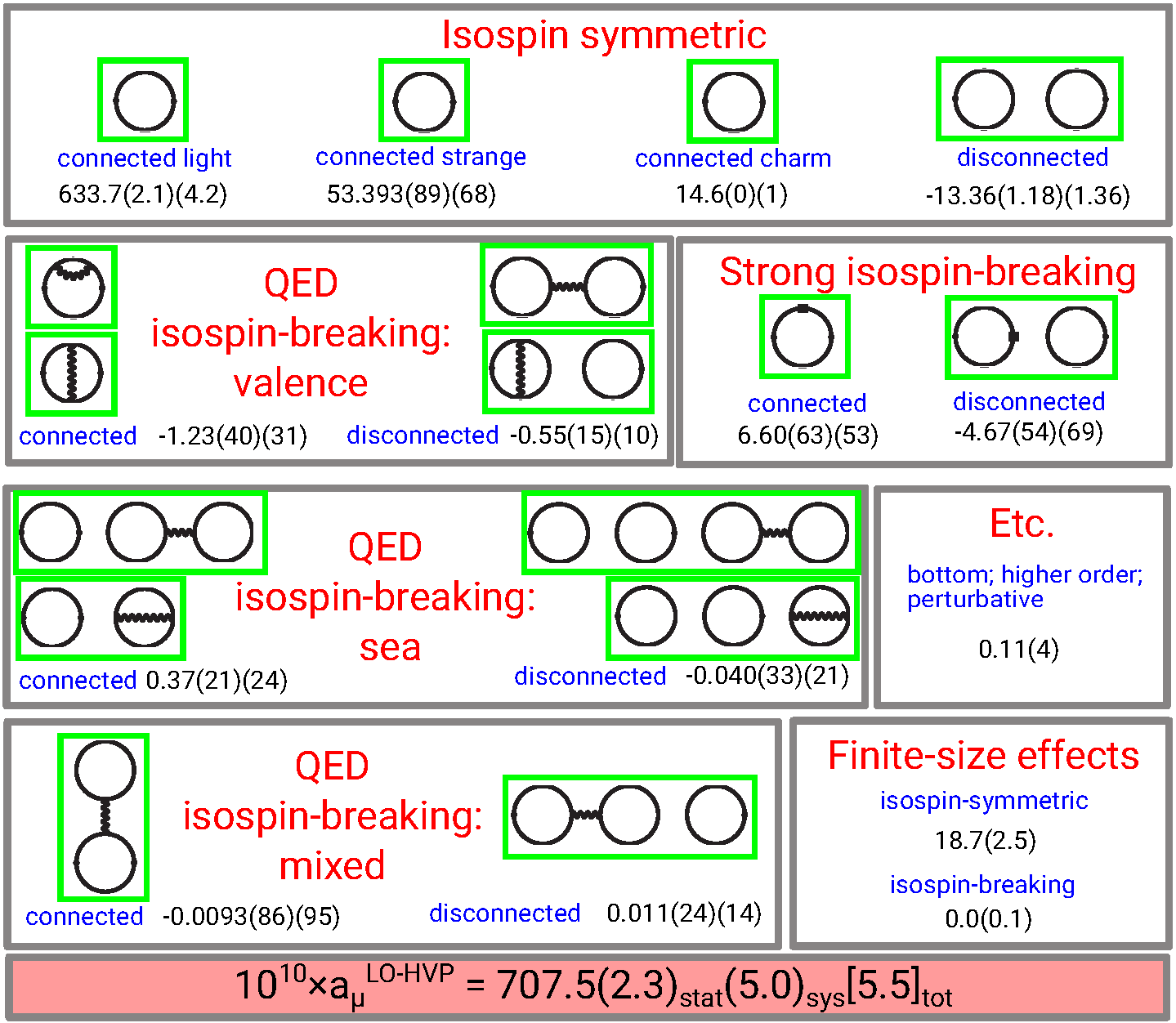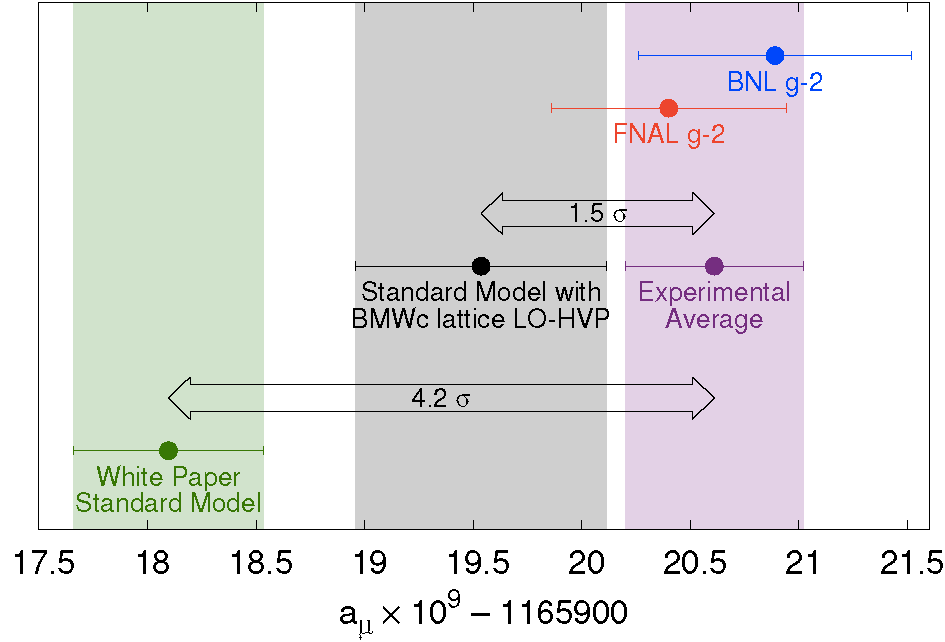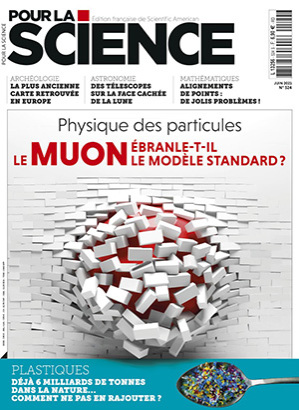Leading hadronic contribution to the muon magnetic moment from lattice QCD
Sz. Borsanyi,1
Z.
Fodor,1,2,3,4,5
J.N. Guenther,6,7
C.
Hoelbling,1 S. D. Katz,4
L. Lellouch,7 T. Lippert,1,2
K.
Miura,7,8,9
L.
Parato,7
K.
K. Szabo,1,2
F.
Stokes,2
B.C. Toth1
Cs.
Torok,2
L.
Varnhorst1,7
arXiv:2002.12347
1 Department of Physics,
University of Wuppertal, D-42119 Wuppertal, Germany
2 Jülich Supercomputing Centre, Forschungszentrum
Jülich, D-52428 Jülich, Germany
3 Department of Physics, Pennsylvania State University, University Park, PA 16802, USA
4 Institute for Theoretical Physics, Eötvös
University, H-1117 Budapest, Hungary
5 University of California, San Diego, 9500 Gilman Drive, La Jolla, CA 92093, USA
6 Department of Physics, University of Regensburg, Regensburg D-93053, Germany
7 Aix Marseille Univ, Université de Toulon, CNRS, CPT, IPhU, Marseille, France
8 Helmholtz Institute Mainz, D-55099 Mainz, Germany
9 Kobayashi-Maskawa Institute for the Origin of Particles and the Universe, Nagoya University, Nagoya
464-8602, Japan
|
|
The standard model of particle physics describes the vast majority of experiments and observations involving elementary particles. Any deviation from its predictions would be a sign of new, fundamental physics. One long-standing discrepancy concerns the anomalous magnetic moment of the muon, a measure of the magnetic field surrounding that particle. Standard-model predictions1 exhibit disagreement with measurements2 that is tightly scattered around 3.7 standard deviations. Today, theoretical and measurement errors are comparable; however, ongoing and planned experiments aim to reduce the measurement error by a factor of four. Theoretically, the dominant source of error is the leading-order hadronic vacuum polarization (LO-HVP) contribution. For the upcoming measurements, it is essential to evaluate the prediction for this contribution with independent methods and to reduce its uncertainties. The most precise, model-independent determinations so far rely on dispersive techniques, combined with measurements of the cross-section of electron–positron annihilation into hadrons. To eliminate our reliance on these experiments, here we use ab initio quantum chromodynamics (QCD) and quantum electrodynamics simulations to compute the LO-HVP contribution. We reach sufficient precision to discriminate between the measurement of the anomalous magnetic moment of the muon and the predictions of dispersive methods. Our result favours the experimentally measured value over those obtained using the dispersion relation. Moreover, the methods used and developed in this work will enable further increased precision as more powerful computers become available. |
|
 |
Contributions to aµLO-HVP, including examples of the corresponding Feynman diagrams.
Solid lines are quarks and curly lines are photons. Gluons are not shown explicitly, and internal quark loops are shown only if they are attached to photons. Dots represent coordinates in position space, boxes denote the mass insertion relevant for strong–isospin symmetry breaking. The numbers give our result for each contribution; they correspond to our ‘reference’ system size defined by Lref = 6.272 fm spatial and Tref = 9.408 fm temporal lattice extents. We also explicitly compute the finite-size corrections that must be added to these results, which are given separately in the lower right panel. The first error is the statistical and the second is the systematic uncertainty, except for the contributions for which only a single, total error is given. Central values are medians; errors are s.e.m.
|
Comparison to experiment and the reference standard model prediction. From top to bottom: experimental values of aµ from
BNL E821, Fermilab E989, and the combined average. The Muon g - 2 Theory Initiative
prediction for the standard model is shown as a green point and error band and is labelled "White Paper Standard Model". It displays a 4.2 standard deviation tension with the experimental average, strongly suggesting the presence of new, fundamental physics. Our result is displayed as the black point with a grey band. It is obtained by replacing the Theory Initiative, LO-HVP contribution by our result in that prediction. Our result significantly reduces the tension with experiment.
|

|


